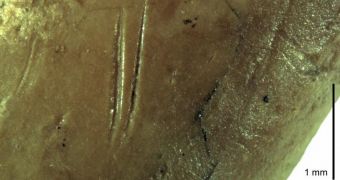Evidence presented in a recent paper in the journal Scientific Reports indicates that Neanderthals used to feast on pigeons they themselves caught. What's more, it appears that they went through the trouble of cooking the birds before eating them.
Archaeologists explain that, while exploring Gorham's Cave, a natural sea cave in Gibraltar believed to be one the last known homes of the Neanderthals, they found well over 1,700 bird bones.
Investigations revealed that these bones had been left behind by an ancient bird species known as the rock dove. These creatures are believed to be the ancestors of domestic creatures, specialists write in the journal Scientific Reports.
Of these bird bones, many displayed cuts, bite marks, and even burns. Hence, it was concluded that they belonged to rock doves caught, cooked, and eaten by Neanderthals inhabiting this part of the world thousands of years ago.
The scientists who found these bones say that, given their impressive number, Neanderthals probably hunted these ancient birds. Thus, it is unlikely that they simply sat around waiting for a rock dove to fall into their lap, ready and willing to offer itself as tribute.
The discovery of these ancient bird bones with bite and cut marks on them contradicts previous claims that Neanderthals were not brainy enough to be able to hunt and catch wild pigeons that they shared their world with thousands of years ago, Nature World News explains.
“At Gorham's Cave, Gibraltar, the Neanderthals exploited Rock Doves for food for a period of over 40 thousand years, the earliest evidence dating to at least 67 thousand years ago,” the specialists behind this research project write in the Abstract to their paper.
“We show that the exploitation was not casual or sporadic, having found repeated evidence of the practice in different, widely spaced, temporal contexts within the cave,” Clive Finlayson with the Gibraltar Museum and fellow researchers go on to detail their findings.
The fact that some of these bird remains date back to 67,000 years ago means that Neanderthals took up the habit of eating barbecued pigeons long before modern humans arrived in the region, about 40,000 years ago. Hence, they could not have learned how to hunt and cook these birds from modern humans.
“Our results point to hitherto unappreciated capacities of the Neanderthals to exploit birds as food resources on a regular basis. More so, they were practicing it long before the arrival of modern humans and had therefore invented it independently,” the specialists say.
In light of these findings, researchers argue that, contrary to previous assumptions, Neanderthals were quite similar to us. As Clive Finlayson puts it, “The more we can show similarities between our ancestors and Neanderthals, the more the barriers between us are broken down.”

 14 DAY TRIAL //
14 DAY TRIAL //